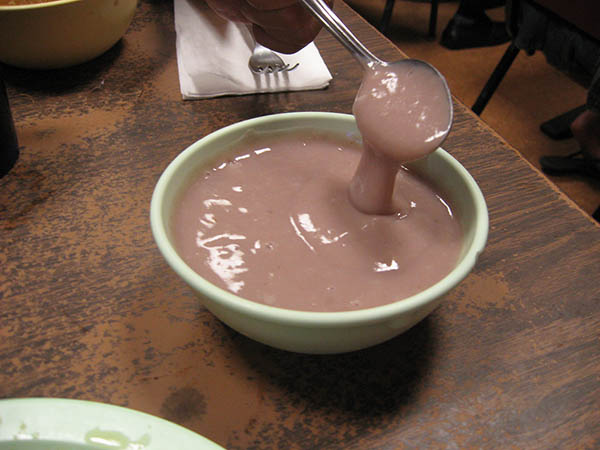 |
 |
 |
|||||
|
Sweet versus Sour Poi:
“Well, that’s personal taste," says Nick Reppun. “I’ve noticed that consumer tastes have changed. Nowadays, everybody likes their poi fresh, I think, or most people like their poi fresh. Most people that are buying from us, it’s gone by the next day, I would assume. “But I think some of the old-timers tend to like sour poi. Some people, in fact, don’t open their bag until two weeks later, to let it start to develop more flavor. And I think the preference for sour poi is partly a thing of the past because there was no refrigeration before. The poi went into an ‘umeke—a bowl in somebody’s household—and there it sat and did its fermentation thing. Most people would leave a little bit of poi, leave a little bit of the sour poi in there before adding fresh poi, so that you kind of inoculate the next batch with the fermentation microbes. It’s like keeping a sourdough starter alive. You got to feed it every once in a while. When you make a loaf of bread, you don’t use all of your dough. You reserve a little bit of that sour dough on the side. That’s your starter for the next batch, so kind of like that. “How quickly it goes sour, I think depends on the quality of the taro that’s used to make the poi, the quality being in relation to the starch content. As the taro matures, the starch begins to break down into sugar. So it goes complex carbohydrates, to simple carbohydrates, to complex sugar, to simple sugars. I think how the poi sours depends on the starch content to start with when you harvest a taro. That would depend on the maturity of the taro. And then there’s also, I think, some varietal factors, which I think most people wouldn’t taste the difference. I think there’s probably not as a generally discerning palette in our consumers today because we’re dominated by the growers on Kaua‘i that are basically all growing one or two varieties. “Everybody thinks poi is purple because of that situation where we went from having hundreds of varieties of taro that are consumed all across the board—different places, different varieties—to having one or two varieties that are widely available. But then, different taros have different characteristics when they sour. It just kind of depends on the variety. “There weren’t a lot of different flavor profiles available in traditional Hawaiian food. So I think that they maybe had a more discerning palette, or that’s all they were eating all the time. You notice the differences more, I guess. There were so many different varieties, but some of them similar in that it might be called a different name, but it’s genetically very similar but it just expresses differently in this valley, versus that valley, versus a different island.” |
|
|||||
|
|||||

